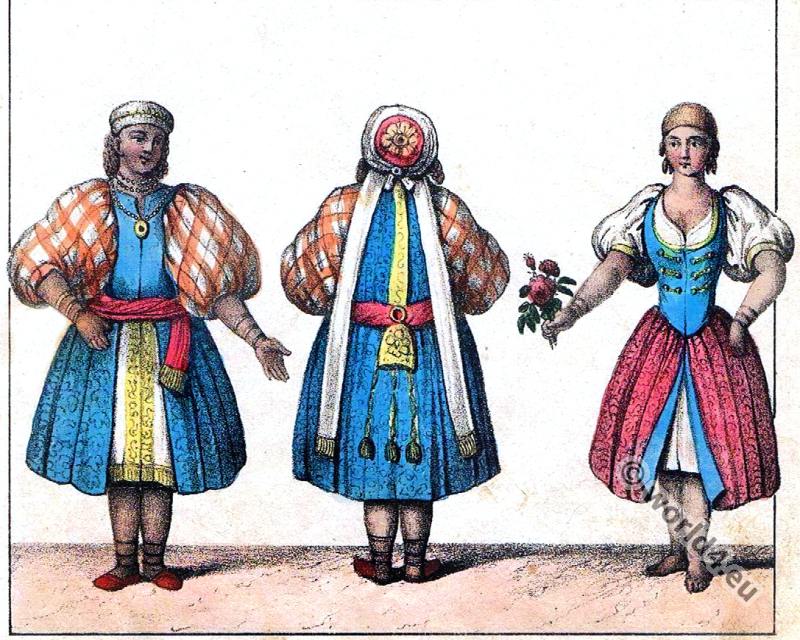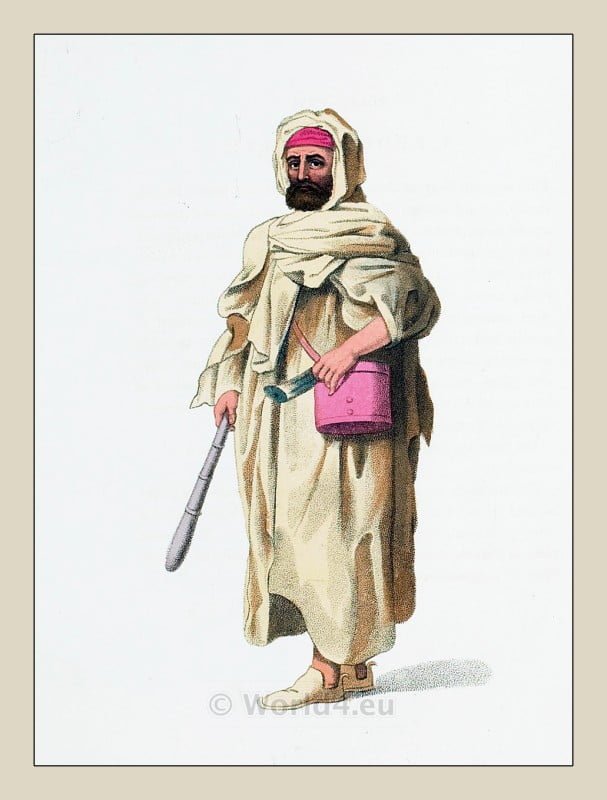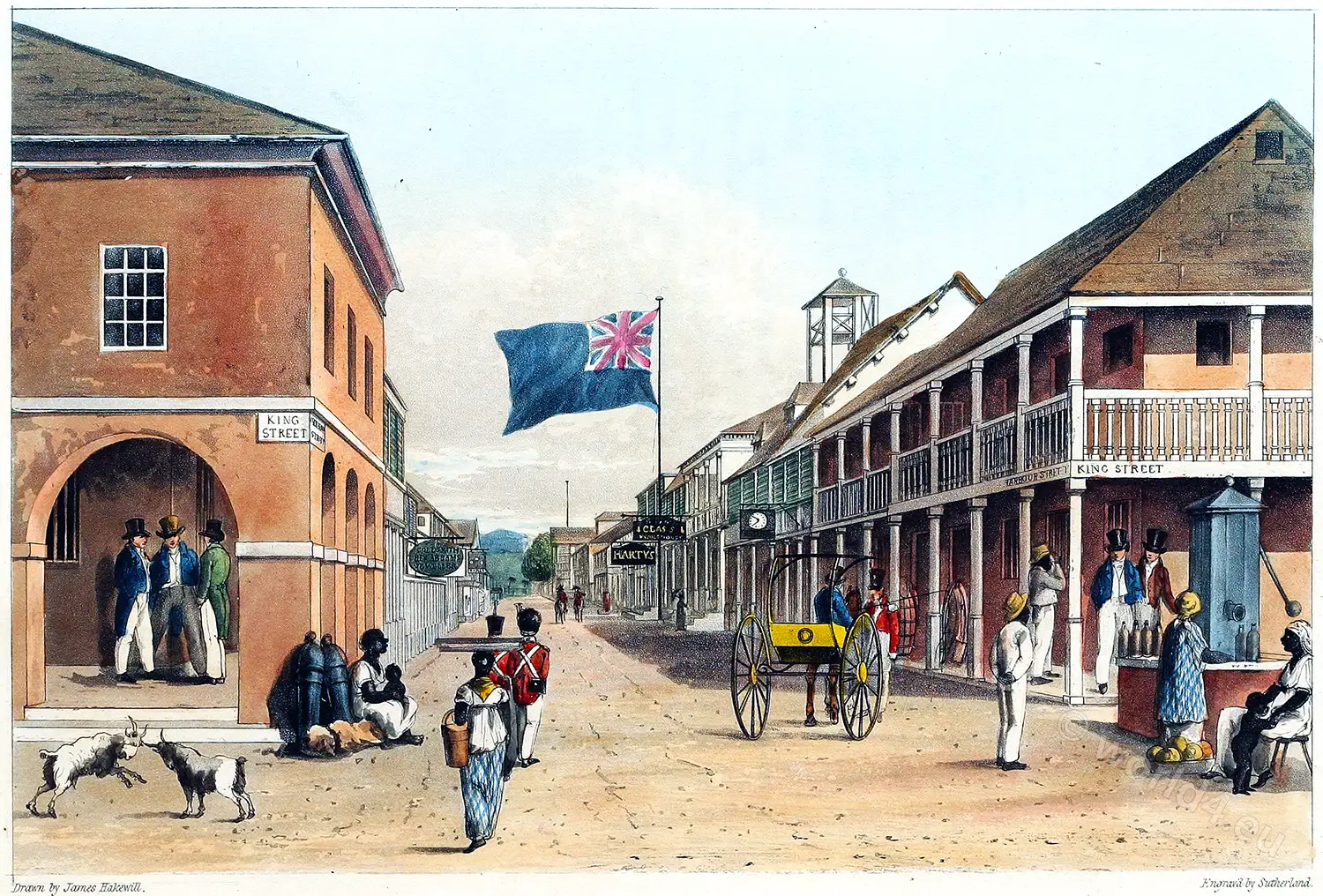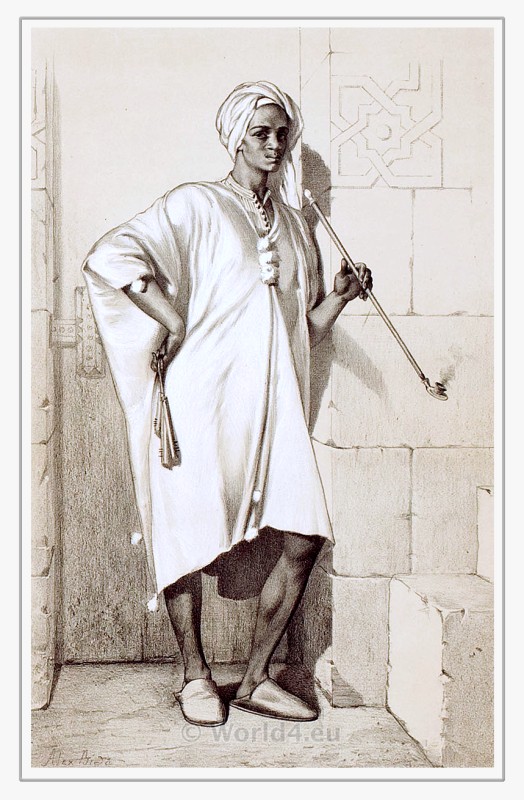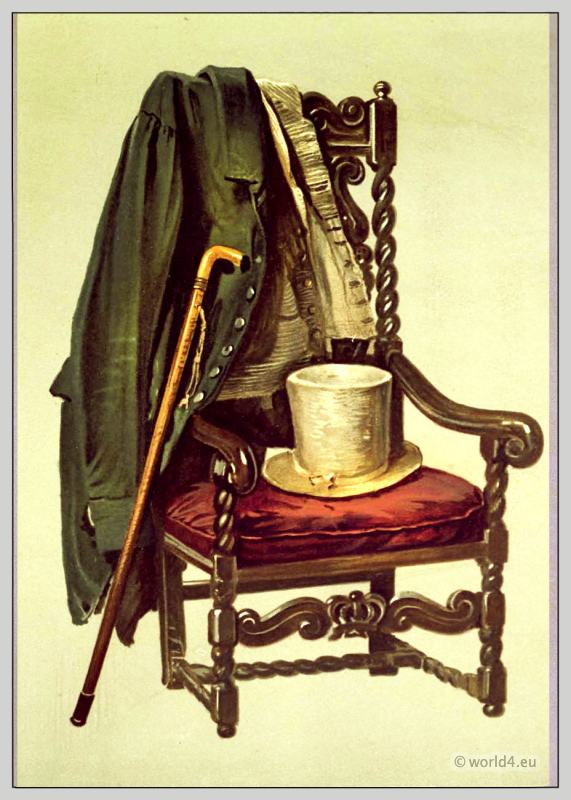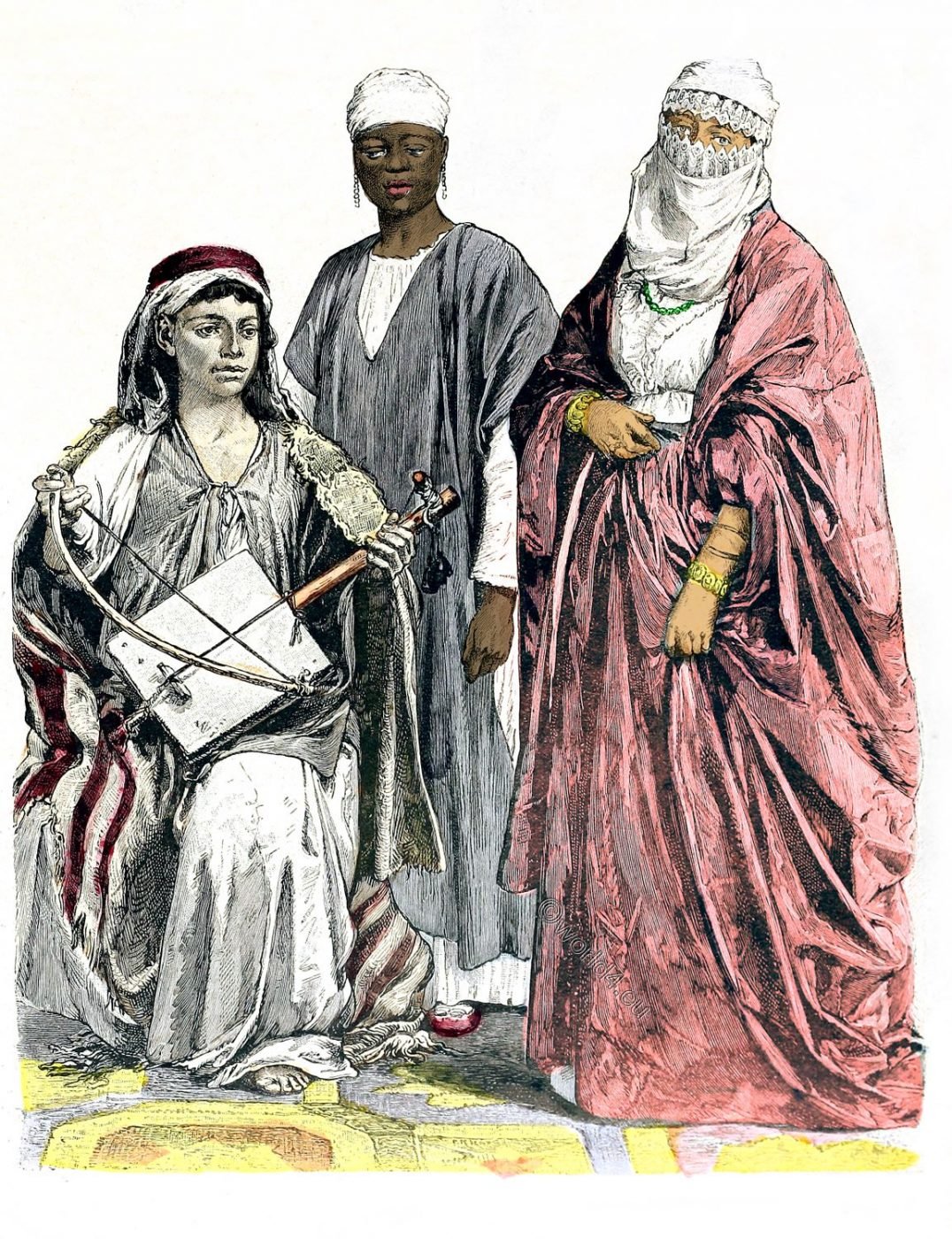
The history of costumes. Sixty-sixth arch. Egypt. Illustration by A. Häberlin. Munich picture sheet no. 950.
Bedouin musician. Slave. Egyptian woman in street clothes.
A young Bedouin (The name comes from the Arabic, بدوي Badawi and means – not sedentary) with Kufiyya, Jilbab and jacket. He plays the ancient stringed instrument Rababa (Rebaba).
In the background is a Nubian slave girl. She is wearing a caftan over a light of woolen dress, her headdress represents a turban.
Right shows an Egyptian woman in street clothing. She wears an ornate scarf around the edges, the niqab, a type of coat-like garment known as the abaya over.
Source: Munich picture sheet 1848 to 1898. The history of costumes. Published by Braun & Schneider. Royal court and university book printing house of Dr. C. Wolf & Sohn in Munich.
Related
Discover more from World4 Costume Culture History
Subscribe to get the latest posts sent to your email.

